Living stones, loving God, serving others
Vestments
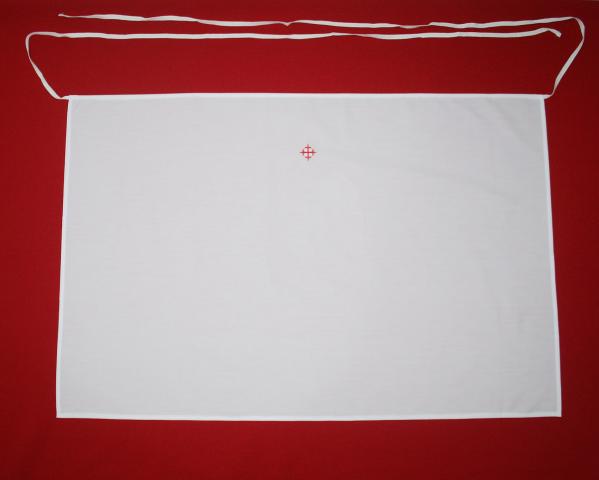
Vessels
Liturgical Colours

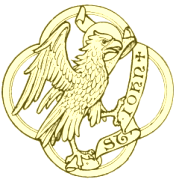
Ω Green
Ω Red
Ω Purple
Ω White/Gold
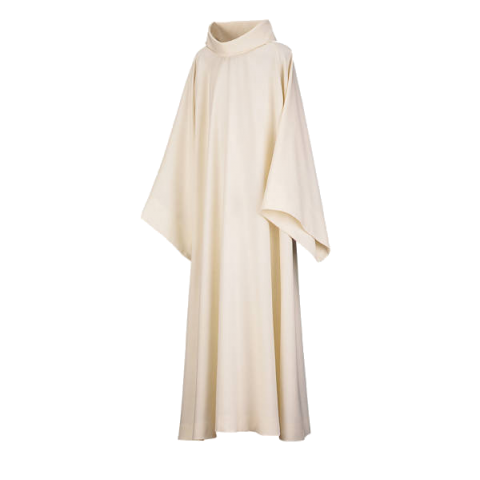
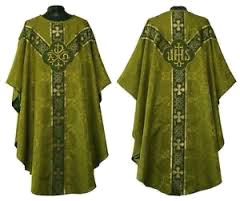
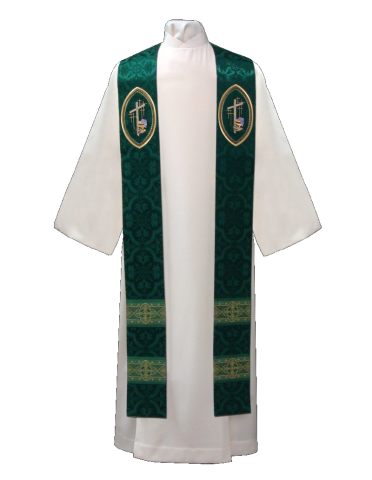
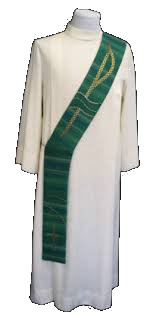
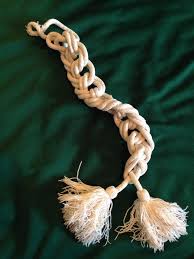
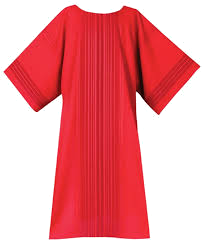
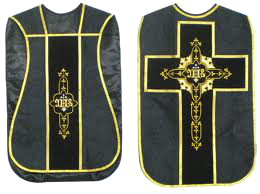
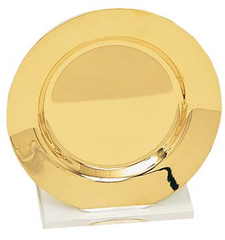
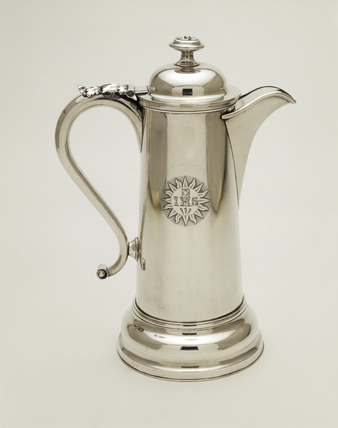
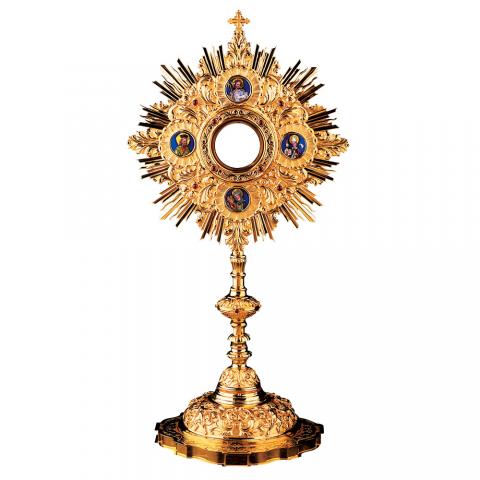
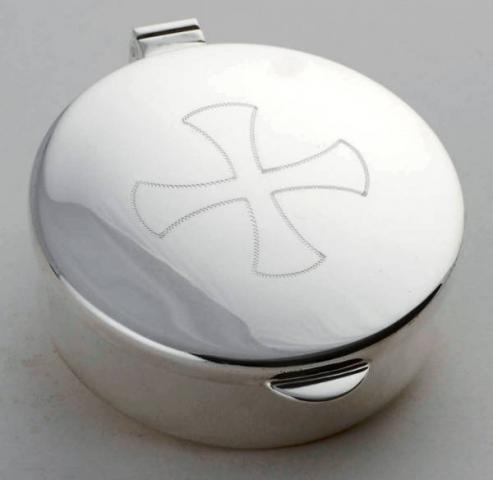
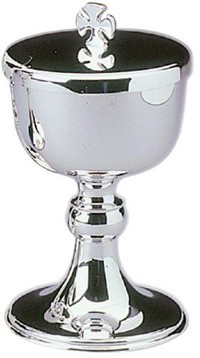

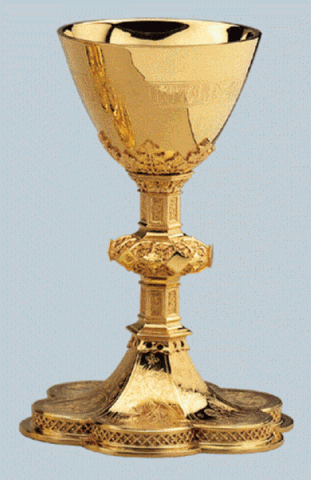
Pyx
A vessel used to carry the Blessed Sacrament to the sick and housebound.
These can be found in many forms, some with the engraving of a simple cross, others with more elaborate decoration
Paten
A small plate made of precious metal on which the large Host sits during the Eucharist
Ciborium
A covered receptacle for storing the consecrated Hots. It can be distinguished from the chalice, when found without the cover by the rim on which the cover rests.
Monstrance
An ornate and decorative container, usually of precious metal, in the shape of a cross with rays emanating from the center. In which, the Blessed Sacrament is displayed to worshipers during Eucharistic adoration.
Flagon
A large vessel containing the sacramental wine, from which the chalice is filled during Mass.
Chalice
A standing cup to hold sacramental wine during the Mass. Chalices are often made of precious metal and sometimes richly embellished and jeweled and tend to be tulip shaped.
Tabernacle
A receptacle in which the ciborium containing the consecrated Hosts is placed. Usually a box-like structure placed in the center of the altar
is a colour symbolizing rejoicing and purity of soul, is worn
during the liturgical seasons of Christmas and Easter. White
vestments are also used for feasts of our Lord (except those
pertaining to His passion), the Blessed Virgin Mary, the angels, and
the saints who were not martyrs. White vestments are also worn on the
Solemnity of St. Joseph, and the Feasts of All Saints, St. John the
Baptist, St. John the Evangelist, the Chair of St. Peter, and the
Conversion of St. Paul. White may also be used for Masses of
Christian Burial and Masses for the Dead to signify the resurrection
of our Lord, when He triumphed over sin and death, sorrow and
darkness. White is is also used for the Feast of Dedication of a church, at Holy
Communion on Maundy Thursday and at Corpus Christi. It may be used for Marriages, and is suitable for
Baptism, Confirmation and Ordination, though red may be preferred.
is used during Advent and Lent as a sign of penance, sacrifice and preparation. At the midpoint of both of these seasons — Gaudete Sunday (the third Sunday of Advent) and Laetare Sunday (the fourth Sunday of Lent — rose vestments are traditionally worn as a sign of joy: we rejoice at the midpoint because we are half-way through the preparation and anticipate the coming joy of Christmas or Easter. Some liturgists, particularly The United States have introduced the use of blue vestments during Advent as a way of distinguishing this season from Lent; however, no approval for blue vestments has been given. Purple vestments may also be used for Masses of Christian Burial or Masses for the Dead.
has a dual imagery: On one hand, red symbolizes the shedding of blood and is therefore used on Palm Sunday (when Christ entered Jerusalem to prepare for His death), Good Friday, any other commemoration of the Lord's passion, the votive Mass of the Precious Blood, the days marking the martyrdom of the apostles (except St. John), and the feasts of other martyrs who offered their lives for the faith.On the other hand, red also signifies the burning fire of God's love. For this reason, red vestments are won on Pentecost when the Holy Spirit descended on the apostles and tongues of fire rested on their heads; for the celebration of the Sacraments of Confirmation and Ordination; and for the votive Masses of the Holy Spirit.
is used during the liturgical season called Ordinary Time. This season focuses on the three-year period of our Lord's public ministry, and the Gospel passages, particularly on Sundays, recount His teachings, miracles, exorcisms, and other deeds during this time. All of these teachings and events engender great hope in the mystery of salvation. We focus on the life He shared with mankind during His time on this earth, the life we share now with Him in the community of the Church and through His sacraments, and we look forward to sharing everlasting life with Him perfectly in Heaven. Green symbolizes this hope and life, just as the hint of green on trees in early Spring arouses the hope of new life.
Fig 1
Fig 2
The Stole
is a decorative band , approximately120cm in length. It is worn by a Deacon over the left shoulder and fastened on the right - Fig 1 and by the priest around the neck - Fig 2, under the chasuble. The stole will be in the same the liturgical colour as the Dalmatic for a Deacon, or the Chasuble for a Priest, both are determined by the time of year and the specific celebration.
The Dalmatic
Fig 1
Fig 2
The Chasuble
The Cincture or Gridle
The Alb
The Amice
Vestments, Vessels and Colours